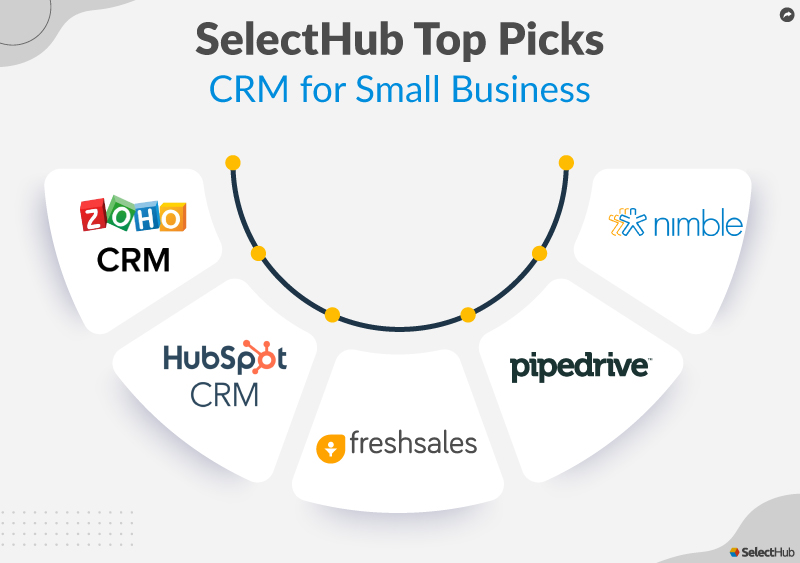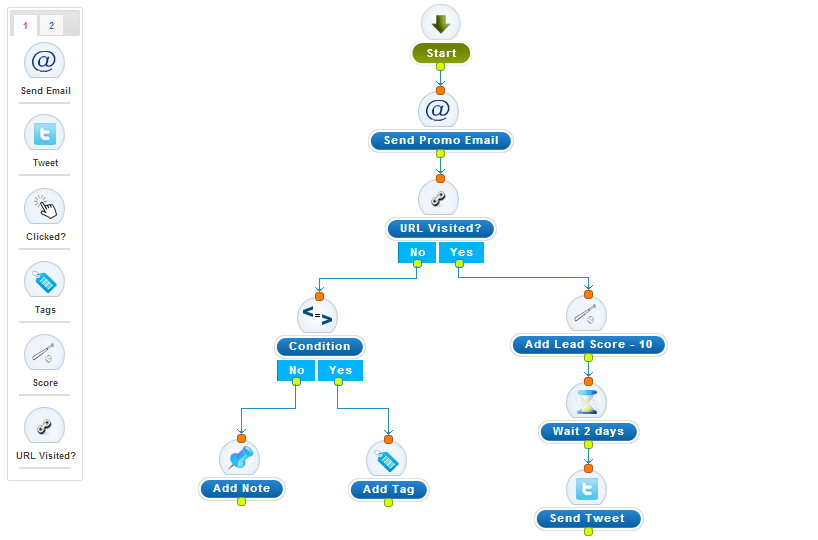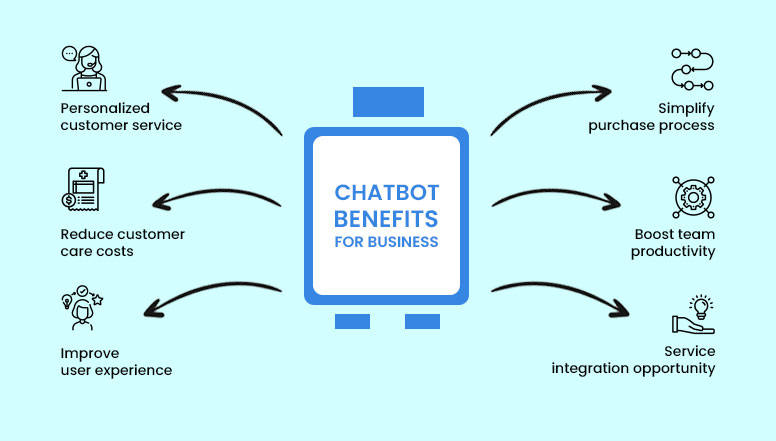Unlock Growth: A Comprehensive Guide to Small Business CRM Setup

Introduction: Why Your Small Business Needs a CRM
Running a small business is like juggling chainsaws while riding a unicycle – challenging, to say the least. You’re the CEO, the marketing guru, the customer service representative, and the janitor, all rolled into one. Amidst the chaos, one tool can be a game-changer: a Customer Relationship Management (CRM) system. But what exactly is a CRM, and why should your small business care?
Simply put, a CRM is a software solution that helps you manage your interactions with current and potential customers. It’s a centralized hub where you store all your customer data, track communications, automate tasks, and analyze your sales and marketing efforts. Think of it as the ultimate organizational tool, designed to streamline your operations and boost your bottom line.
In today’s competitive landscape, neglecting customer relationships is like shooting yourself in the foot. Customers expect personalized experiences, quick responses, and consistent communication. Without a CRM, you’re likely missing out on valuable leads, losing track of important conversations, and failing to capitalize on opportunities for growth. This guide will walk you through everything you need to know about setting up a CRM for your small business, from choosing the right platform to implementing best practices for success.
Understanding the Benefits of a CRM for Small Businesses
Before diving into the setup process, let’s explore the compelling advantages a CRM offers to small businesses:
1. Improved Customer Relationship Management
At its core, a CRM is about building and nurturing customer relationships. It allows you to:
- Centralize Customer Data: Consolidate all customer information – contact details, purchase history, communication logs, and more – in one accessible location. This eliminates the need to search through multiple spreadsheets, emails, and notebooks.
- Personalize Interactions: Access a complete view of each customer’s journey, allowing you to tailor your communication and offers to their specific needs and preferences.
- Enhance Customer Service: Quickly access customer information during support calls or email exchanges, providing faster and more efficient resolutions.
2. Increased Sales and Revenue
A CRM can significantly boost your sales performance by:
- Lead Management: Track leads from initial contact to conversion, ensuring no opportunity slips through the cracks.
- Sales Automation: Automate repetitive tasks like sending follow-up emails, scheduling appointments, and generating quotes, freeing up your sales team to focus on closing deals.
- Sales Forecasting: Gain insights into your sales pipeline and predict future revenue, allowing you to make informed business decisions.
3. Enhanced Marketing Effectiveness
A CRM empowers your marketing efforts by:
- Targeted Campaigns: Segment your customer base and create highly targeted marketing campaigns based on demographics, interests, and purchase history.
- Marketing Automation: Automate email marketing, social media posts, and other marketing activities to nurture leads and drive conversions.
- Performance Tracking: Monitor the performance of your marketing campaigns and identify what’s working and what’s not, allowing you to optimize your strategies.
4. Improved Efficiency and Productivity
By automating tasks and streamlining processes, a CRM can save you valuable time and resources:
- Reduced Manual Data Entry: Automate data entry and reduce the risk of errors associated with manual processes.
- Improved Collaboration: Enable your team to collaborate more effectively by sharing customer information and tracking progress on deals.
- Better Time Management: Automate scheduling, reminders, and follow-ups, freeing up your time to focus on more strategic activities.
5. Data-Driven Decision Making
A CRM provides valuable insights into your business performance, allowing you to make data-driven decisions:
- Sales Analytics: Track key sales metrics like conversion rates, average deal size, and sales cycle length.
- Customer Analytics: Analyze customer behavior and identify trends to improve customer satisfaction and retention.
- Reporting and Dashboards: Generate reports and dashboards to visualize your data and track your progress towards your goals.
Choosing the Right CRM for Your Small Business
Selecting the right CRM is crucial for your success. Consider the following factors when making your decision:
1. Your Business Needs and Goals
Before you start shopping for a CRM, take the time to assess your business needs and goals. Ask yourself:
- What are your biggest challenges in managing customer relationships?
- What are your sales and marketing goals?
- What features are essential for your business?
- How many users will need access to the CRM?
- What is your budget?
Answering these questions will help you narrow down your options and choose a CRM that aligns with your specific requirements.
2. CRM Features and Functionality
Different CRMs offer different features. Consider the following functionalities when evaluating your options:
- Contact Management: The ability to store and manage contact information, including names, addresses, phone numbers, and email addresses.
- Lead Management: Features for tracking leads, qualifying them, and nurturing them through the sales pipeline.
- Sales Automation: Capabilities for automating sales tasks like email follow-ups, appointment scheduling, and quote generation.
- Marketing Automation: Features for creating and managing email marketing campaigns, social media posts, and other marketing activities.
- Reporting and Analytics: Tools for generating reports and dashboards to track your sales, marketing, and customer service performance.
- Integration with Other Tools: The ability to integrate with other tools you use, such as email marketing platforms, accounting software, and e-commerce platforms.
- Mobile Accessibility: The ability to access the CRM from your mobile devices, allowing you to stay connected on the go.
3. Pricing and Budget
CRM pricing varies widely, from free options to expensive enterprise-level solutions. Consider your budget and choose a CRM that offers the features you need at a price you can afford. Many CRMs offer different pricing tiers based on the number of users and the features included. Be sure to compare the pricing of different CRMs and choose the one that provides the best value for your money.
4. Ease of Use and Implementation
Choose a CRM that is easy to use and implement. Look for a CRM with a user-friendly interface, intuitive navigation, and helpful tutorials and support resources. The easier the CRM is to use, the more likely your team will adopt it and the more value you’ll get from it. Consider the following aspects:
- User Interface: Is the interface clean, intuitive, and easy to navigate?
- Customization Options: Can you customize the CRM to fit your specific needs?
- Training and Support: Does the CRM provider offer adequate training and support resources?
- Implementation Process: How easy is it to set up and configure the CRM?
5. Scalability
Choose a CRM that can grow with your business. As your business expands, you’ll need a CRM that can handle an increasing number of users, contacts, and data. Look for a CRM that offers scalable features and pricing plans.
6. Popular CRM Options for Small Businesses
Here are some of the leading CRM platforms popular among small businesses:
- HubSpot CRM: A free, all-in-one CRM with powerful features for sales, marketing, and customer service. It’s known for its user-friendliness and extensive integrations.
- Zoho CRM: A comprehensive CRM with a wide range of features, including sales automation, marketing automation, and customer service tools. It offers a variety of pricing plans to suit different business needs.
- Salesforce Sales Cloud: A more robust and feature-rich CRM suitable for growing businesses and enterprises. It offers extensive customization options and a wide range of integrations.
- Pipedrive: A sales-focused CRM designed to help sales teams manage their pipelines and close deals. It’s known for its intuitive interface and visual pipeline management.
- Freshsales: A sales CRM with a focus on ease of use and automation. It offers features like lead scoring, email tracking, and built-in phone functionality.
Research each of these options thoroughly, compare their features, pricing, and reviews, and select the one that best aligns with your specific business needs.
Setting Up Your Small Business CRM: A Step-by-Step Guide
Once you’ve chosen your CRM, it’s time to set it up. Here’s a step-by-step guide to help you get started:
1. Planning and Preparation
Before you begin setting up your CRM, take the time to plan and prepare. This will save you time and frustration in the long run.
- Define Your Goals: What do you want to achieve with your CRM? Identify your key goals and objectives.
- Map Your Processes: Document your existing sales, marketing, and customer service processes. This will help you identify areas where the CRM can be used to improve efficiency.
- Gather Your Data: Collect all the data you’ll need to import into your CRM, such as customer contact information, sales data, and marketing campaign data.
- Assign Roles and Responsibilities: Determine who will be responsible for managing the CRM and training your team.
2. Account Setup and Configuration
Follow these steps to set up your CRM account:
- Create an Account: Sign up for an account with your chosen CRM provider.
- Enter Your Company Information: Provide your company name, address, and other relevant information.
- Configure User Accounts: Create user accounts for each member of your team and assign appropriate roles and permissions.
- Customize Settings: Customize the CRM settings to match your company’s branding and preferences.
3. Data Import and Organization
Importing your data is a crucial step in setting up your CRM. Here’s how to do it:
- Prepare Your Data: Format your data into a CSV or Excel file that is compatible with your CRM.
- Import Your Data: Follow the instructions provided by your CRM to import your data.
- Map Your Fields: Map the fields in your data file to the corresponding fields in your CRM.
- Clean Your Data: Review your data and clean up any errors or inconsistencies.
- Organize Your Data: Organize your data into logical categories and segments.
4. Customization and Configuration
Customize your CRM to fit your specific needs:
- Customize Fields and Forms: Add, edit, or remove fields and forms to capture the information you need.
- Create Custom Objects: Create custom objects to track unique data specific to your business.
- Configure Workflows and Automations: Set up workflows and automations to streamline your processes and save time.
- Integrate with Other Tools: Integrate your CRM with other tools you use, such as email marketing platforms, accounting software, and e-commerce platforms.
5. Training and Adoption
Training your team is essential for successful CRM adoption:
- Provide Training: Train your team on how to use the CRM and its features.
- Create User Guides and Documentation: Create user guides and documentation to help your team learn and use the CRM.
- Encourage Adoption: Encourage your team to use the CRM by highlighting its benefits and providing ongoing support.
- Monitor Usage: Monitor user activity and provide ongoing training and support as needed.
6. Testing and Refinement
Test your CRM setup and make any necessary refinements:
- Test Your Setup: Test your CRM setup to ensure that everything is working as expected.
- Gather Feedback: Gather feedback from your team and make any necessary adjustments.
- Monitor Performance: Monitor your CRM’s performance and make any necessary optimizations.
- Regularly Review and Update: Regularly review and update your CRM setup to ensure that it continues to meet your needs.
Best Practices for CRM Success in Small Businesses
Setting up a CRM is just the first step. To maximize its value, follow these best practices:
1. Define Clear Goals and Objectives
Before you start using your CRM, clearly define your goals and objectives. What do you hope to achieve with the CRM? Are you looking to increase sales, improve customer satisfaction, or streamline your marketing efforts? Having clear goals will help you track your progress and measure the success of your CRM implementation.
2. Involve Your Team
Get your team involved in the CRM implementation process from the beginning. Seek their input on the features and functionality they need. Provide adequate training and support to ensure that they are comfortable using the CRM. When your team is invested in the CRM, they are more likely to adopt it and use it effectively.
3. Keep Your Data Clean and Up-to-Date
The quality of your data is critical to the success of your CRM. Regularly clean and update your data to ensure that it is accurate and reliable. This includes removing duplicate records, correcting errors, and updating contact information.
4. Automate Tasks to Save Time
Take advantage of the automation features offered by your CRM. Automate repetitive tasks like sending follow-up emails, scheduling appointments, and generating quotes. This will free up your team to focus on more important activities, such as building relationships with customers and closing deals.
5. Use Analytics to Track Your Progress
Use the analytics features of your CRM to track your progress towards your goals. Monitor key metrics like conversion rates, average deal size, and customer satisfaction. Use this data to identify areas for improvement and optimize your sales, marketing, and customer service strategies.
6. Integrate Your CRM with Other Tools
Integrate your CRM with other tools you use, such as email marketing platforms, accounting software, and e-commerce platforms. This will streamline your workflows and provide a more complete view of your customer data. Integration allows for seamless data transfer between systems.
7. Regularly Review and Refine Your Strategy
CRM is not a set-it-and-forget-it solution. Regularly review your CRM strategy and make adjustments as needed. Assess your progress towards your goals and identify areas where you can improve your processes. Stay up-to-date on the latest CRM features and best practices to ensure that you are getting the most out of your system.
8. Provide Ongoing Training and Support
Provide ongoing training and support to your team to ensure that they are using the CRM effectively. Offer refresher courses, answer questions, and provide troubleshooting assistance. The more comfortable your team is with the CRM, the more value they will get from it.
9. Focus on Customer Experience
Ultimately, the goal of a CRM is to improve the customer experience. Use your CRM to personalize your interactions with customers, provide excellent customer service, and build strong relationships. The more satisfied your customers are, the more likely they are to become loyal advocates for your business.
Troubleshooting Common CRM Setup Issues
Even with careful planning, you may encounter some challenges during your CRM setup. Here’s how to address some common issues:
1. Data Import Problems
Data import issues are common, but they can be resolved with these steps:
- Incorrect File Format: Ensure your data is in a compatible format (CSV, Excel).
- Field Mapping Errors: Double-check that fields in your import file are correctly mapped to CRM fields.
- Data Formatting Issues: Clean up data inconsistencies like extra spaces, incorrect date formats, or special characters.
2. User Adoption Challenges
Getting your team to embrace the CRM is crucial. Overcome adoption hurdles by:
- Lack of Training: Provide comprehensive training sessions and ongoing support.
- Poor User Interface: Choose a user-friendly CRM or customize the interface to improve usability.
- Resistance to Change: Communicate the benefits of the CRM and address any concerns your team may have.
3. Integration Issues
Integrating your CRM with other tools can sometimes be tricky. Troubleshoot integration problems by:
- Compatibility Issues: Verify that your CRM and the other tools are compatible.
- Incorrect API Keys: Ensure you have the correct API keys and connection settings.
- Data Synchronization Problems: Monitor data synchronization and troubleshoot any errors that arise.
4. Performance Issues
If your CRM runs slowly, try these fixes:
- Large Data Sets: Optimize your CRM by archiving old data or upgrading your storage.
- Slow Internet Connection: Ensure a stable and fast internet connection.
- Software Bugs: Check for updates and report any bugs to your CRM provider.
Conclusion: Embracing CRM for Long-Term Success
Setting up a CRM is a significant investment in your small business’s future. By choosing the right platform, following the setup steps, and implementing best practices, you can unlock the full potential of CRM and achieve long-term success. Remember, a well-implemented CRM is more than just a software tool; it’s a strategic asset that empowers you to build stronger customer relationships, boost sales, improve marketing effectiveness, and drive overall business growth.
Embrace the journey, stay committed to continuous improvement, and watch your small business thrive with the power of a well-managed CRM system!




